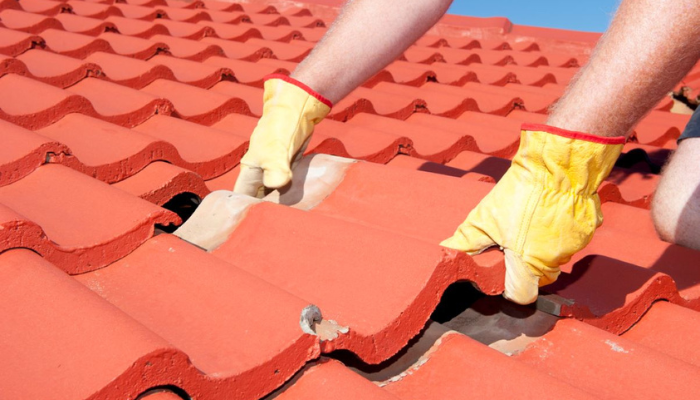Getting a new roof without paying a deductible might sound like a tempting prospect, but it's essential to understand that insurance policies and their regulations vary, and trying to circumvent your deductible may not always be ethical or legal. However, there are legitimate ways to minimize your out-of-pocket expenses when replacing your roof. In this guide, we'll explore the steps to follow to potentially reduce your costs, but always remember to consult with your insurance provider and a roofing professional to ensure you're acting within the boundaries of your policy and the law. Wikipedia.org
- Understand Your Insurance Policy: The first step in getting a new roof without paying a deductible is to thoroughly understand your homeowners' insurance policy. Read through your policy documents or contact your insurance agent to familiarize yourself with your coverage and deductible. Most policies cover roof damage caused by specific perils, such as storms, hail, wind, or fire. Understanding your policy's terms and limitations is crucial to determine what might be covered and what deductible you are responsible for.
- Document the Damage: If your roof has sustained damage due to a covered peril, it's essential to document the extent of the damage. Take clear photographs and videos, making sure to capture the damage from various angles and distances. This documentation will serve as evidence when you file a claim with your insurance company. Ensure you also keep records of any repair or maintenance work you have performed on your roof in the past, as this can affect your claim.
- Hire a Professional Roof Inspector: To maximize your chances of a successful insurance claim and potentially reduce your deductible, hire a professional roof inspector. These experts can assess the damage, provide a detailed report, and offer an estimate for repair or replacement. Insurance companies are more likely to accept claims that come with professional assessments and estimates.
- Obtain Multiple Quotes: Before filing a claim, it's a good practice to obtain multiple quotes from reputable roofing contractors. These quotes can help you understand the potential cost of the repair or replacement. When you submit your claim to your insurance company, they may consider these quotes when determining the payout. Having several estimates can help ensure you receive fair compensation. Read more about how to get a new roof without paying deductible
- File an Insurance Claim: Once you've documented the damage and gathered professional assessments and estimates, it's time to file an insurance claim. Contact your insurance company promptly, as there is often a time limit for filing claims after the damage occurs. Provide all the necessary documentation and be honest in your description of the damage.
- Negotiate with Your Insurance Adjuster: After filing a claim, an insurance adjuster will be assigned to your case. They will assess the damage and determine the extent of coverage. It's crucial to be present during the adjuster's inspection, as you can discuss the damage and your estimates with them. While the adjuster's job is to protect the interests of the insurance company, you can negotiate the settlement to ensure it adequately covers the necessary repairs.
- Review Your Policy for Coverage Enhancements: Check your insurance policy for any optional coverage enhancements that may reduce your deductible or cover certain repair costs. Some policies offer special endorsements for roof replacement or repair, which can help reduce your financial burden. If you're not sure, consult your insurance agent for advice on available options.
- Consider Roofing Manufacturer Warranties: When getting a new roof, consider roofing materials with strong manufacturer warranties. High-quality shingles and roofing systems often come with warranties that cover specific damages for a certain period. By selecting such materials, you may be able to reduce out-of-pocket expenses when the need for a new roof arises.
- Be Prepared for Potential Negotiations: Insurance claims can be a lengthy process, and insurance companies may initially offer settlements that are lower than expected. Be prepared to negotiate with your insurance provider to ensure you receive a fair payout. Be patient and persistent in your efforts, and provide all necessary documentation and evidence to support your claim.
- Be Wary of Unethical Practices: While the goal is to minimize your out-of-pocket expenses, it's crucial to act ethically and within the bounds of the law. Attempting to get a new roof without paying a deductible through fraudulent or dishonest means can result in severe consequences, including policy cancellation and legal action. Always follow the proper procedures, and if you have concerns or doubts, consult with a legal expert.
In conclusion, getting a new roof without paying a deductible is possible if you've experienced damage caused by covered perils and you follow the appropriate steps. Understanding your insurance policy, documenting the damage, hiring professionals, obtaining multiple quotes, filing a claim, and negotiating with your insurance adjuster are key components of this process. It's also essential to explore any coverage enhancements in your policy and consider manufacturer warranties for roofing materials. However, always act ethically and within the bounds of the law, as attempting to bypass your deductible through dishonest means can lead to severe consequences. Consult with your insurance provider and roofing professionals to ensure you navigate this process effectively and responsibly. Visit official website onlyroofing.com

